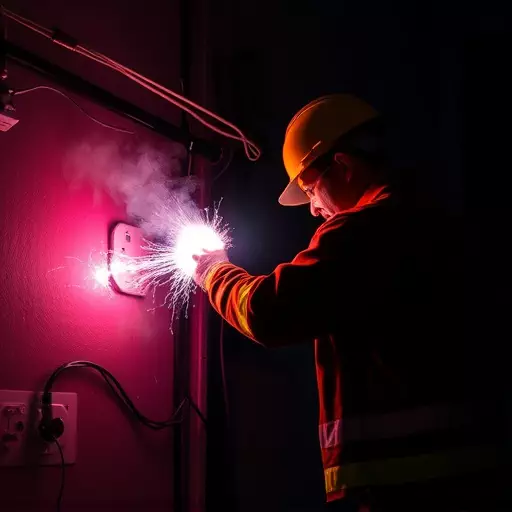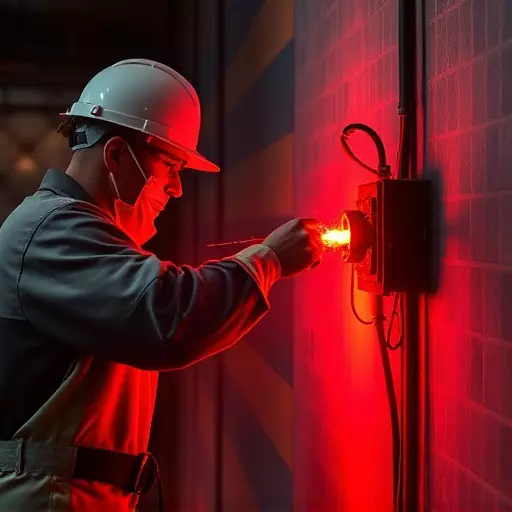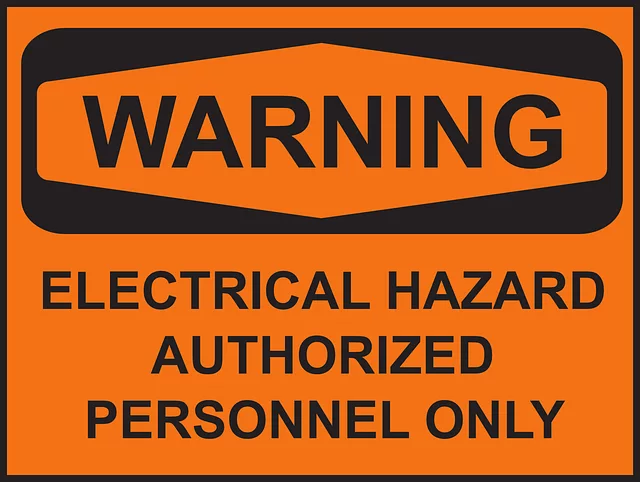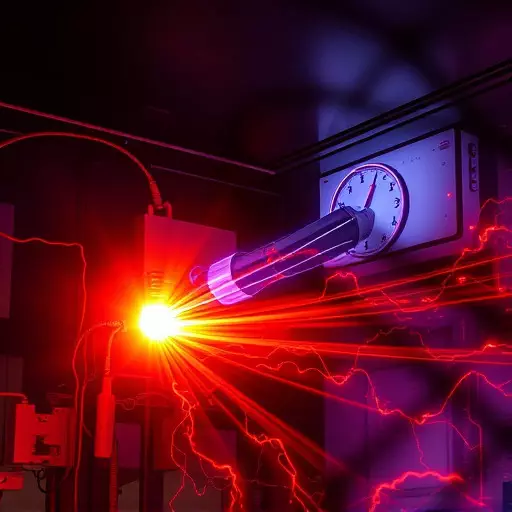An Arc Flash Hazard Analysis (AFHA) is a critical process for identifying and mitigating risks associated with electrical systems, involving equipment design, procedures, maintenance, and human factors. By assessing the likelihood and consequences of arc flash events, organizations can target strategies like equipment upgrades, improved protective devices, enhanced training, and strict lockout/tagout procedures to reduce exposure during critical tasks. Regular reviews and rigorous training on these practices are vital for long-term electrical safety compliance, adhering to industry best practices and safeguarding workers from severe injuries or fatalities. Real-world incidents emphasize the importance of AFHA and lockout/tagout protocols in preventing catastrophic failures.
“In the realm of electrical safety, understanding and mitigating arc flash hazards are paramount. This comprehensive guide delves into the critical aspect of lockout/tagout procedures, a game-changer in preventing catastrophic events. We explore how a meticulous Arc Flash Hazard Analysis (AFHA) identifies risks, guiding effective arc flash risk reduction strategies.
Electrical systems, when not managed responsibly, can pose significant threats. Thus, ensuring electrical safety compliance is vital for long-term protection. Learn from real-world success stories and gain insights into navigating this complex landscape.”
- Understanding Arc Flash Hazard Analysis: Identifying Risks
- The Role of Lockout/Tagout in Preventing Catastrophic Events
- Implementing Effective Arc Flash Risk Reduction Strategies
- Ensuring Electrical Safety Compliance for Long-Term Protection
- Real-World Examples: Success Stories in Arc Flash Safety
Understanding Arc Flash Hazard Analysis: Identifying Risks

Arc Flash Hazard Analysis is a critical process that identifies and assesses risks associated with electrical systems and equipment. It involves a thorough understanding of how an arc flash event could occur, its potential consequences, and the likelihood of its happening. This analysis takes into account various factors such as equipment design, operating procedures, maintenance practices, and human factors.
By conducting a comprehensive hazard analysis, organizations can effectively pinpoint areas where arc flash risks are high. It helps in implementing targeted strategies for arc flash risk reduction, ensuring electrical safety compliance. This may include upgrading outdated equipment, improving protective devices, enhancing training programs, and establishing robust work practices to minimize exposure during maintenance or repair activities.
The Role of Lockout/Tagout in Preventing Catastrophic Events

The role of lockout/tagout procedures is paramount in preventing catastrophic events associated with arc flash hazards. These procedures ensure that electrical equipment is de-energized and secured before maintenance or repair, minimizing the risk of severe injuries or fatalities. By implementing lockout/tagout practices, workers can effectively isolate circuits and prevent unintended activation during work activities. This critical step forms a crucial element in any comprehensive arc flash hazard analysis, as it significantly reduces the potential for electrical arcing and associated risks.
Adhering to strict electrical safety compliance standards, including proper lockout/tagout techniques, is essential for arc flash risk reduction. It involves identifying potential hazards, implementing control measures, and ensuring all personnel are trained in safe work practices. These proactive steps are vital to creating a safe working environment, protecting employees, and maintaining regulatory adherence.
Implementing Effective Arc Flash Risk Reduction Strategies

Implementing effective arc flash risk reduction strategies is paramount for ensuring electrical safety compliance and mitigating the significant risks associated with arc flash hazards. A thorough Arc Flash Hazard Analysis (AFHA) serves as a foundational step, identifying potential sources of arcs, their frequencies, and the resulting risks. This analysis enables facilities to make informed decisions about appropriate protective measures.
Once hazards are identified, organizations can implement targeted strategies. These may include upgrading electrical systems, installing arc-flash protective equipment, providing specialized training for workers, and establishing strict lockout/tagout procedures. By combining these approaches, companies can significantly reduce the likelihood and severity of arc flash incidents, fostering a safer working environment in accordance with electrical safety compliance standards.
Ensuring Electrical Safety Compliance for Long-Term Protection

In the realm of electrical safety, ensuring long-term protection goes beyond initial implementation; it requires consistent compliance with established standards. Lockout/tagout procedures for arc flash safety are not mere regulatory requirements but essential components of a comprehensive risk reduction strategy. By implementing robust lockout/tagout practices, organizations can mitigate the significant risks associated with arc flash hazards, which can lead to severe injuries or even fatalities.
Regular reviews and updates of electrical systems, coupled with rigorous training and enforcement, ensure ongoing electrical safety compliance. This proactive approach not only adheres to industry best practices but also safeguards workers over extended periods. An arc flash hazard analysis forms the cornerstone of this strategy, identifying potential risks and driving targeted interventions for effective arc flash risk reduction.
Real-World Examples: Success Stories in Arc Flash Safety

In recent years, several real-world examples have highlighted the critical importance of lockout/tagout procedures in arc flash safety. One notable case involved a maintenance team working on an electrical panel in a manufacturing plant. Without properly implementing an arc flash hazard analysis and following electrical safety compliance guidelines, a simple maintenance task escalated into a severe incident. Fortunately, quick thinking and adherence to robust arc flash risk reduction measures limited the damage and prevented serious injuries.
Another success story comes from a healthcare facility where a routine equipment upgrade turned into a potential disaster without proper precautions. By meticulously performing an arc flash hazard analysis and strictly adhering to lockout/tagout protocols, the maintenance team successfully mitigated risks associated with high-voltage systems. This proactive approach not only ensured the safety of workers but also demonstrated the value of electrical safety compliance in preventing catastrophic failures and saving lives.


